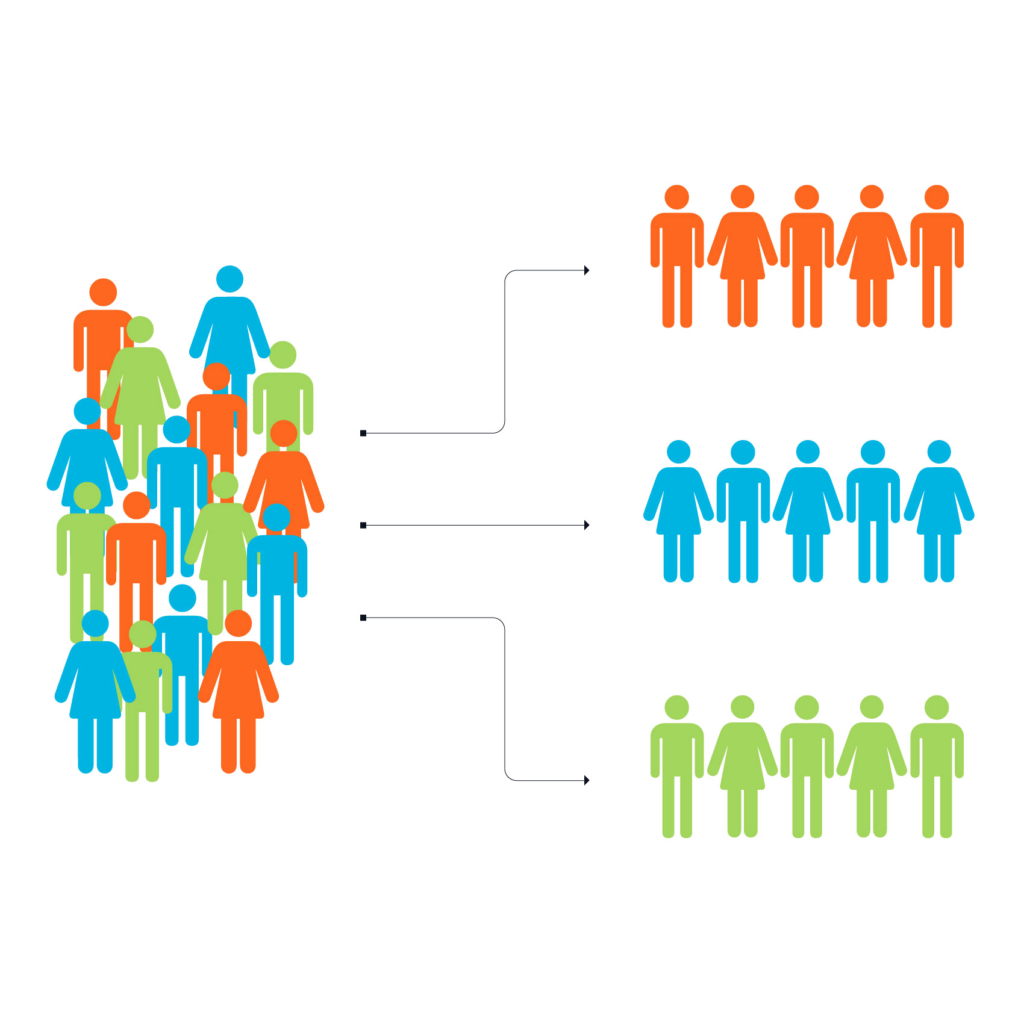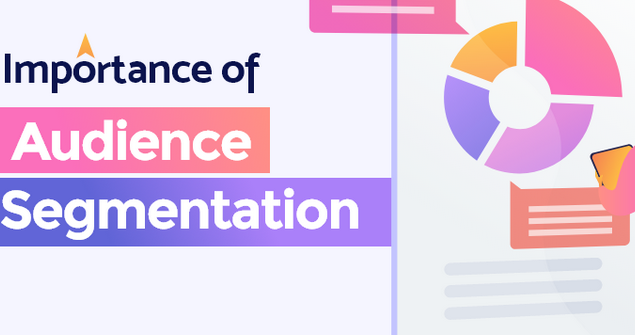Audience segmentation is a pivotal aspect of modern marketing strategies. In a digital era where personalized experiences matter, understanding your audience becomes more critical than ever. Let’s delve into the importance of audience segmentation and explore why it’s a game-changer for businesses.
Importance of Audience Segmentation

The importance of audience segmentation involves dividing a target audience into distinct groups based on specific criteria. These criteria can include demographics, behaviors, preferences, and more. It goes beyond generic marketing approaches, allowing businesses to tailor their strategies to meet the unique needs of each segment.
Importance of Understanding Your Audience
Knowing your audience is the cornerstone of successful marketing. It enables businesses to create content, products, and services that resonate with their target market. Audience segmentation is the tool that facilitates this understanding, helping businesses connect with customers on a deeper level.
Benefits of Audience Segmentation
A. Personalized Marketing
One of the primary benefits of audience segmentation is the ability to deliver personalized marketing messages. By tailoring content to specific segments, businesses can address the unique needs and preferences of each group. This personalized approach enhances the overall customer experience and fosters brand loyalty.
B. Improved Customer Engagement
Segmented audiences are more likely to engage with content that speaks directly to their interests. This engagement goes beyond surface-level interactions, creating a sense of connection between the brand and the customer. Higher engagement levels often translate into increased brand advocacy and word-of-mouth marketing.
C. Enhanced Conversion Rates
Targeted marketing efforts result in higher conversion rates. When businesses understand the pain points and desires of each audience segment, they can optimize their strategies to drive conversions. Whether it’s through tailored promotions or personalized recommendations, audience segmentation maximizes the impact of marketing campaigns.
How to Implement Audience Segmentation
A. Data Collection and Analysis
Effective audience segmentation starts with robust data collection and analysis. Businesses need to gather information on demographics, purchasing behavior, online interactions, and more. Analyzing this data provides valuable insights into the different segments within the target audience.
B. Identifying Demographics
Demographic segmentation involves categorizing the audience based on factors such as age, gender, income, and location. Understanding these demographic nuances helps in creating targeted content and marketing messages.
C. Behavioral Segmentation
Behavioral segmentation focuses on understanding customer actions and preferences. It delves into how customers interact with products or services, what motivates their purchasing decisions, and how they engage with marketing channels. Behavioral insights are crucial for crafting strategies that resonate with specific audience behaviors.
Audience Segmentation Tools
A. Customer Relationship Management (CRM) Software
CRM software plays a pivotal role in managing customer data. It allows businesses to track customer interactions, preferences, and behaviors, facilitating effective audience segmentation.
B. Analytics Platforms
Analytics platforms provide in-depth insights into online user behavior. These tools help businesses understand how customers navigate websites, engage with content, and respond to marketing campaigns.
C. Social Media Insights
Social media platforms offer valuable data on customer preferences and interactions. Utilizing social media insights enables businesses to refine their audience segmentation strategies based on real-time trends.
Common Mistakes to Avoid
A. Overlooking Data Privacy
While collecting data is essential, businesses must prioritize data privacy. Overlooking this aspect can lead to trust issues and legal complications. Implementing robust data protection measures ensures ethical audience segmentation.
B. Neglecting Emerging Trends
Consumer behaviors and preferences are dynamic. Neglecting emerging trends in the industry can result in outdated segmentation strategies. Regularly monitoring market trends helps businesses stay ahead of the curve.
C. Relying Solely on Demographics
Demographics are essential, but relying solely on them may limit the effectiveness of audience segmentation. Combining demographic, behavioral, and psychographic factors provides a more comprehensive understanding of the audience.
Future Trends
A. AI and Machine Learning Integration
The future of the importance of audience segmentation lies in the integration of artificial intelligence (AI) and machine learning. These technologies can analyze vast amounts of data in real-time, allowing businesses to adapt their strategies dynamically.
B. Predictive Analytics
Predictive analytics will play a crucial role in forecasting customer behaviors. By leveraging predictive models, businesses can anticipate the needs and preferences of their audience, staying one step ahead in their marketing efforts.
Challenges
A. Data Accuracy
Maintaining accurate and up-to-date customer data is a persistent challenge. Inaccuracies in data can lead to flawed segmentation, affecting the effectiveness of marketing campaigns.
B. Constantly Changing Consumer Behavior
Consumer behavior evolves rapidly, influenced by various factors such as technological advancements and societal changes. Adapting to these shifts is a challenge for businesses seeking to maintain relevant audience segmentation.
Tips for Effective Implementation
A. Regularly Update Customer Profiles
To ensure accuracy, businesses should routinely update customer profiles. This involves collecting new data and modifying existing profiles based on evolving customer behaviors.
B. Test and Refine Segmentation Strategies
Audience segmentation is not a one-size-fits-all solution. Businesses should continually test and refine their segmentation strategies based on campaign performance and shifting market dynamics.
Conclusion
In conclusion, the importance of audience segmentation cannot be overstated in today’s competitive business landscape. It serves as the foundation for personalized marketing, improved customer engagement, and enhanced conversion rates. As businesses navigate the challenges and embrace future trends, effective audience segmentation remains a key driver of marketing success.
For a hands-on experience of how audience segmentation can elevate your marketing efforts, request a demo from AIM Technologies today. Take the first step towards unlocking the power of targeted marketing and connecting with your audience on a deeper level.
FAQs
Is audience segmentation only relevant for large businesses?
- No, audience segmentation is beneficial for businesses of all sizes. It helps tailor marketing strategies to specific customer groups, fostering better engagement and conversion.
How often should businesses update their audience segmentation strategies?
- Businesses should regularly review and update their strategies, especially when there are significant changes in market trends or consumer behavior.
What role does AI play in audience segmentation?
- AI enhances audience segmentation by analyzing vast datasets in real-time, identifying patterns, and predicting future behaviors, allowing businesses to make data-driven decisions.
Can businesses use audience segmentation for offline marketing?
- Yes, audience segmentation principles can be applied to offline marketing strategies, such as direct mail campaigns and events, to enhance their effectiveness.
Is it possible to over-segment an audience?
- Yes, over-segmentation can be counterproductive. Businesses should find a balance, focusing on meaningful segments to avoid diluting their marketing efforts.




